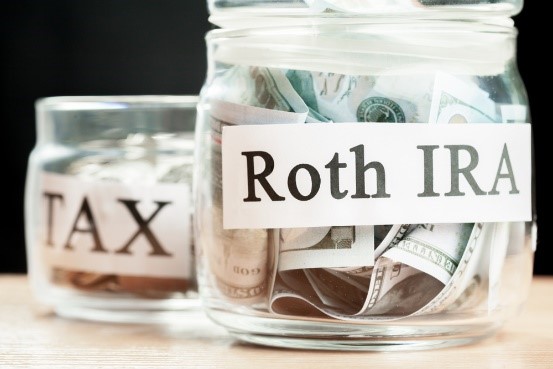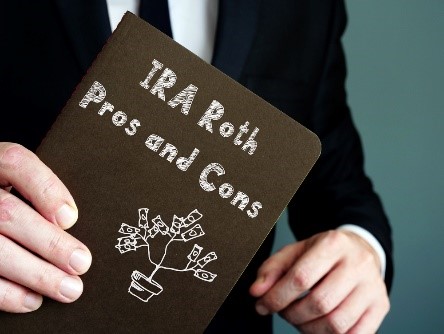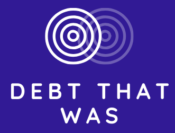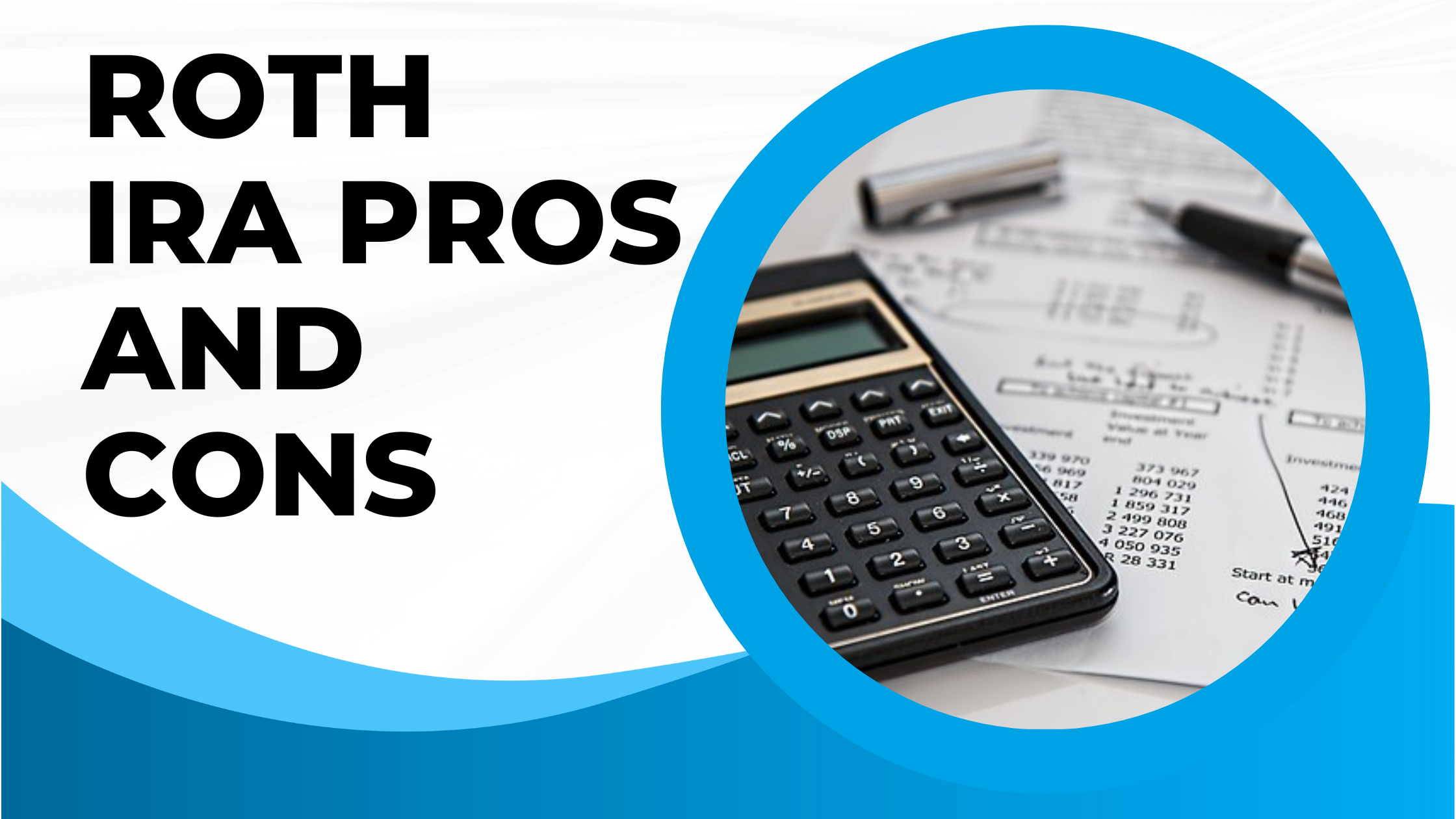A Roth IRA is a contributory individual retirement account (IRA) where contributors make deposits from their earnings after tax has been deducted.
These IRAs are designated as Roth during setup, so the contributor cannot seek tax deductions for their annual contributions as they file returns.
Because the savings comprise after-tax dollars, the participants are not required to pay any income tax when withdrawing the funds, plus any earnings made over the years.
The IRA must fulfill certain conditions for the withdrawals to be deemed as qualified distributions to avoid withdrawal penalties.
Qualified distributions to this retirement account are tax-free if you meet all the requirements.
Like all retirement plans, Roth IRAs have their strengths and weaknesses, which you should be aware of as you ponder the best way to secure your retirement.
Table of Contents
ToggleRoth IRA Pros

Free Withdrawals
Contributors can access their accounts without taxes or penalties after meeting certain conditions.
No Age Restriction
Since 2020, you can keep making a Roth IRA contribution to your account, provided you still have earned income, regardless of age. The maximum age used to be capped at 70 ½ years.
No Mandatory Taking of Required Minimum Distributions (RMDs)
The term refers to the minimum amount that should be withdrawn from an individual retirement saving account annually after reaching a certain age, which is currently 72 ½ years.
This IRA withdrawal rule prevents people from evading taxes by pumping money into IRAs. The figure is determined by distributing the account’s worth over the contributor’s reasonable life expectancy. It is applied to traditional contribution IRAs and many employer-sponsored retirement plans.
Funds in Roth IRAs are tax-free, which makes it unnecessary to implement these rules on a Roth IRA contribution.
The money can be kept intact, grown, and passed on to your heirs if you have other income sources to survive on. You can leave amounts in your Roth IRA account as long as you are alive.
Withdrawal Flexibility
Roth IRAs allow contributors to withdraw 100% of their contribution at any point without levying taxes or penalties.
You only get charged for the capital gains and dividends if you access them before they meet the standards of qualified distributions.
A key component of these standards is the participant has to have reached 59 ½ years of age. You also need to have contributed for a minimum of 5 years.
However, it is not advisable to withdraw your contribution on a whim as you may do with a bank account. Your investment goes down, and you will lose capital gains to taxes.
Tax-Free Growth of Investment
No taxes are levied on dividends and capital gains. The entire amount in the retirement account grows exponentially.
Beneficiaries from Deceased Accounts Don’t Get Penalized
This is another advantage of investing income tax-free dollars. Nothing is owed at the point of withdrawal, so transferring the amounts to a beneficiary’s account is not subjected to penalties and taxes.
Ability to Participate in Other Retirement Plans
A Roth IRA doesn’t restrict you from participating in other retirement plans or investment programs, whether employer- or self-sponsored.
This is provided your total IRA contributions remain within your individual contribution limit. This allows you to diversify your investments.
Roth IRA Cons

Contributions Are Taxed
This upfront application of income tax reduces the amount available for investment. However, you can set up a larger traditional IRA or grow an existing one faster with the same amount of money.
Because a Roth contribution is taxed, they don’t reduce your adjusted gross income (AGI), so you will not benefit from any tax breaks due to participation in a Roth IRA plan.
Low Contribution Limits
For 2022, the maximum amount you can contribute to your Roth IRA is $6,000. If you have reached 50 years of age, you have an optional retirement catch-up allowance of $1,000, bringing your maximum permissible individual contribution to $7,000.
These amounts are similar to traditional IRA limits, but the income limit further restricts the ability to contribute to Roth IRAs. The IRS sets income eligibility limits for every year depending on the cost of living adjustments.
For 2022, you need to earn less than $125,000 as a single contributor and $198,000 as a couple filing joint returns to contribute the maximum amounts highlighted above.
The amount you can contribute starts being phased out if your earnings are above these thresholds, up to $140,000 for the individual and $208,000 for the married couple.
You cannot participate in a Roth IRA if your earnings surpass these limits.
Deciding Whether a Roth IRA is Right for You
Consider your current position against where you project yourself to be at retirement, focusing on two key aspects: your tax bracket and income level.
If your tax bracket is likely to be higher than it currently is, a Roth IRA will have you paying fewer taxes upfront for your contribution. The reverse is also true.
A Roth IRA is a great idea for contributors in the early stages of their careers as they have the highest probability of retiring in a higher tax bracket.
Their compensation is usually at the lowest level it will be throughout their career. Their contributions are taxed at this lower bracket, and the savings and subsequent investments are freed from the tax burden.
It is not the best fit if your earnings are at their peak as per your career standards because you will be in a high tax bracket, making the tax deduction on your contributions punitive.
There is also a higher probability of your tax bracket coming down after retirement due to reduced earnings.
A traditional IRA is better placed to optimize returns in this case because taxes will be deducted at a lower rate post-retirement, and more of your untaxed contribution will be available for investment.

A person can participate in other defined benefit and contributory retirement plans, along with a Roth IRA. It is advisable to look at viable combinations that may mitigate the shortcomings.
You can split the investment between a traditional and Roth IRA to diversify your tax benefits or have the Roth IRA as a backup to an employer-sponsored defined contribution plan like a Roth 401k.

